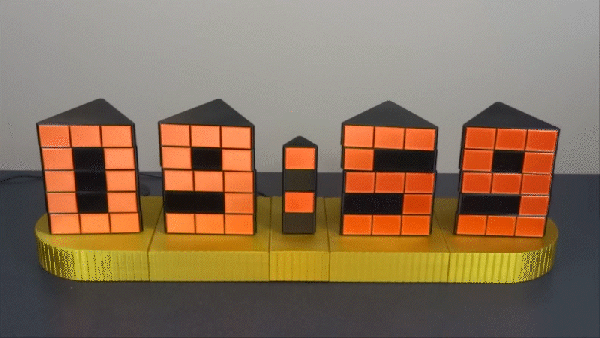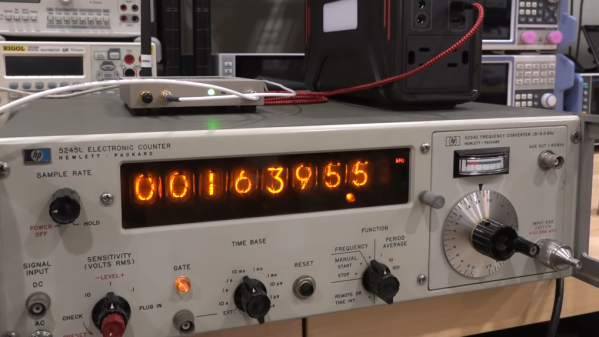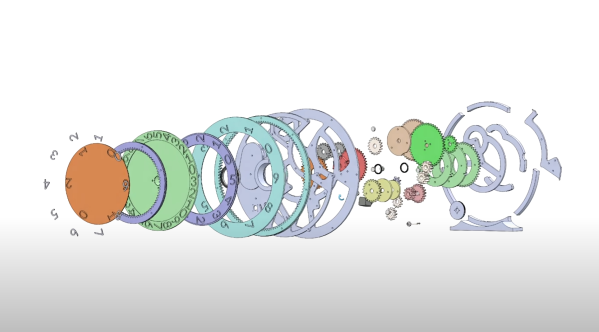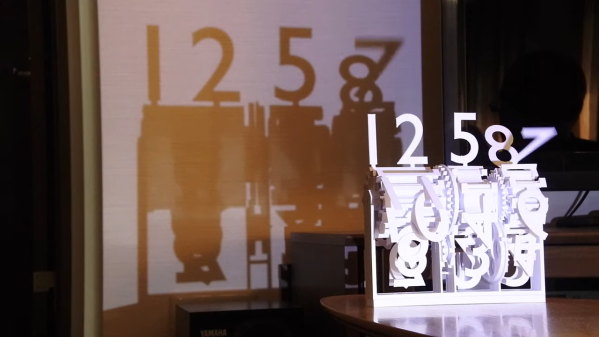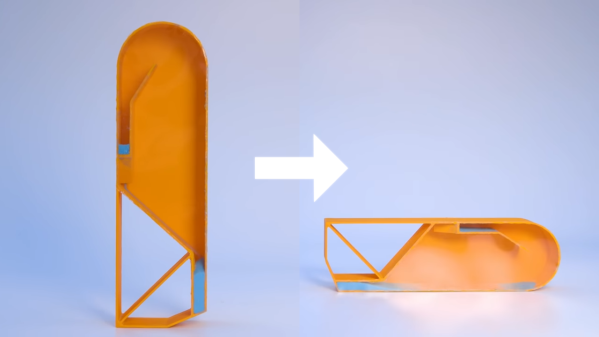Analog clocks are beautiful things inside, using ornate gear trains to keep track of time in a dance of mechanical beauty. However, all too often, the complexity is hidden inside. This gear clock design from [Tada3], however, proudly shows off its workings.
A small stepper motor is used to run the clock’s movement, a small part of the 28BYJ-48 variety. The motor is driven once per second, making the gear train tick along in a rather compelling way that is somehow more visually interesting. Of course, with some modification to the design, continuous motion could easily be done as well.
The stepper motor is driven by an Arduino Nano, which also handles the timekeeping. One thing that’s missing is a real-time clock, something that should be added to the design if you wish it to keep accurate time. As it is, the included Arduino sketch simply uses the delay() function to time the stepping of the motor. It makes the clock tick along, but will quickly drift out of sync.
The design was also recreated in a YouTube video by [Mirko Pavleski], showing that the files are of suitable quality for building your own at home. We’ve seen some gear clock designs before, too, from the laser-cut to the neatly-nested. Video after the break.
Continue reading “A Simple 3D Printed Gear Clock Shows Off How It Works”


